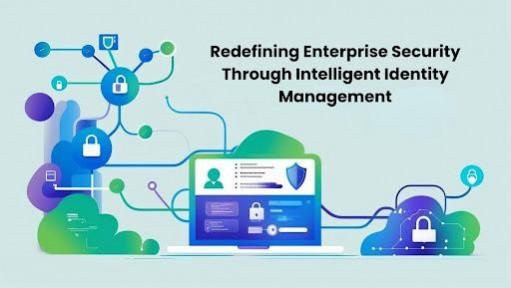
A seasoned identity security professional, Sivaprasad Yerneni Khaga explores the foundational frameworks essential for securing enterprise environments in a cloud first world. His recent work presents actionable strategies that modern organizations can adopt to strengthen authentication and access control systems.
The Rise of Identity Centric Security
Traditional perimeter based models have faded as enterprises face increasingly distributed workforces. The pivot to identity as the core security boundary is now essential. Advanced tools like Single Sign On (SSO), Multi Factor Authentication (MFA), and Role Based Access Control (RBAC) have become the bedrock of identity centric security, enabling seamless access while maintaining stringent protection standards. These innovations move organizations closer to Zero Trust architectures by replacing broad trust zones with fine grained identity verification.
Scaling for the Enterprise
As organizations grow, identity systems must evolve to manage complexity without degrading performance. The work explores the challenges of scaling identity services, from supporting up to 500 million directory objects to tiered administrative delegation. Particularly noteworthy is the hybrid identity synchronization strategy, which bridges cloud and on premises environments, reducing operational overhead. The implementation of multi tenant governance frameworks ensures consistent policy application across fragmented organizational structures.
Smarter Authentication Mechanisms
Going beyond traditional MFA, the study emphasizes passwordless authentication as a powerful defense against phishing and brute force attacks. Technologies like FIDO2 keys and facial recognition not only reduce risk but also improve user convenience. Another standout is the adoption of Conditional Access where context, such as location or device health, shapes access decisions. Risk based access is becoming dynamic, adjusting authentication requirements in real time based on anomalies and behavioral patterns.
Governed Access to the Core
The implementation of Privileged Identity Management (PIM) introduces "zero standing access," ensuring elevated permissions are granted only when needed and only with approval. This significantly lowers the risk associated with dormant admin privileges. The strategy blends role discovery, secure activation protocols, and regular access reviews to build a proactive security culture around privileged accounts.
Agile Authorization through Dynamic Groups
Managing user access at scale becomes increasingly complex, and here, dynamic group membership based on user attributes brings agility and clarity. Rule based memberships driven by parameters like department or role enable automated access assignment. Organizations are urged to avoid overly complex logic by breaking down rules into manageable layers and testing thoroughly before deployment to maintain reliability and transparency.
Lifecycle Centric Access Management
Access packages designed around business functions, not technical hierarchies, simplify approval workflows and reduce misconfigurations. Integration with HR systems enables timely revocation of access when roles change or employment ends. Additionally, risk based access reviews customized by resource sensitivity ensure organizations maintain least privilege principles while keeping oversight efficient.
Seamless Application and Platform Integration
The paper underscores how identity systems must integrate cleanly with enterprise applications and platforms. OAuth 2.0 and OpenID Connect, combined with just in time access protocols, deliver stronger control over sensitive application access. Azure AD's centrality to productivity suites requires structured governance to avoid the rise of unmanaged collaboration environments. Furthermore, Zero Trust frameworks built atop Azure AD capabilities validate every access request dynamically, not statically.
Governance Built for Compliance and Continuity
Modern identity governance must meet stringent compliance needs. Automated enforcement mechanisms using Azure Policy, real time analytics, and AI driven anomaly detection replace outdated manual review cycles. These systems align security practices with regulatory mandates like GDPR and HIPAA.
In conclusion, Sivaprasad Yerneni Khaga's work lays out a pragmatic and forward thinking blueprint for enterprises navigating the shifting identity security landscape. His insights showcase how integrating innovation, automation, and governance can equip organizations to withstand the evolving threat landscape while streamlining identity operations.








